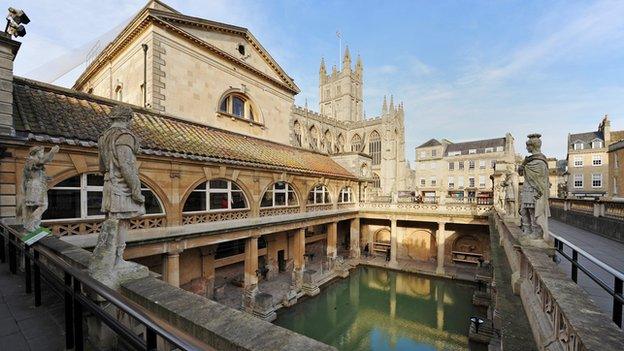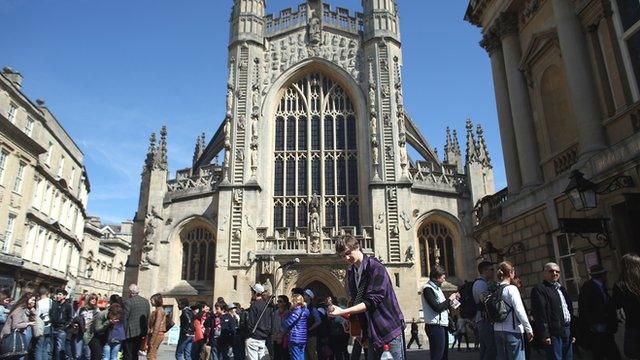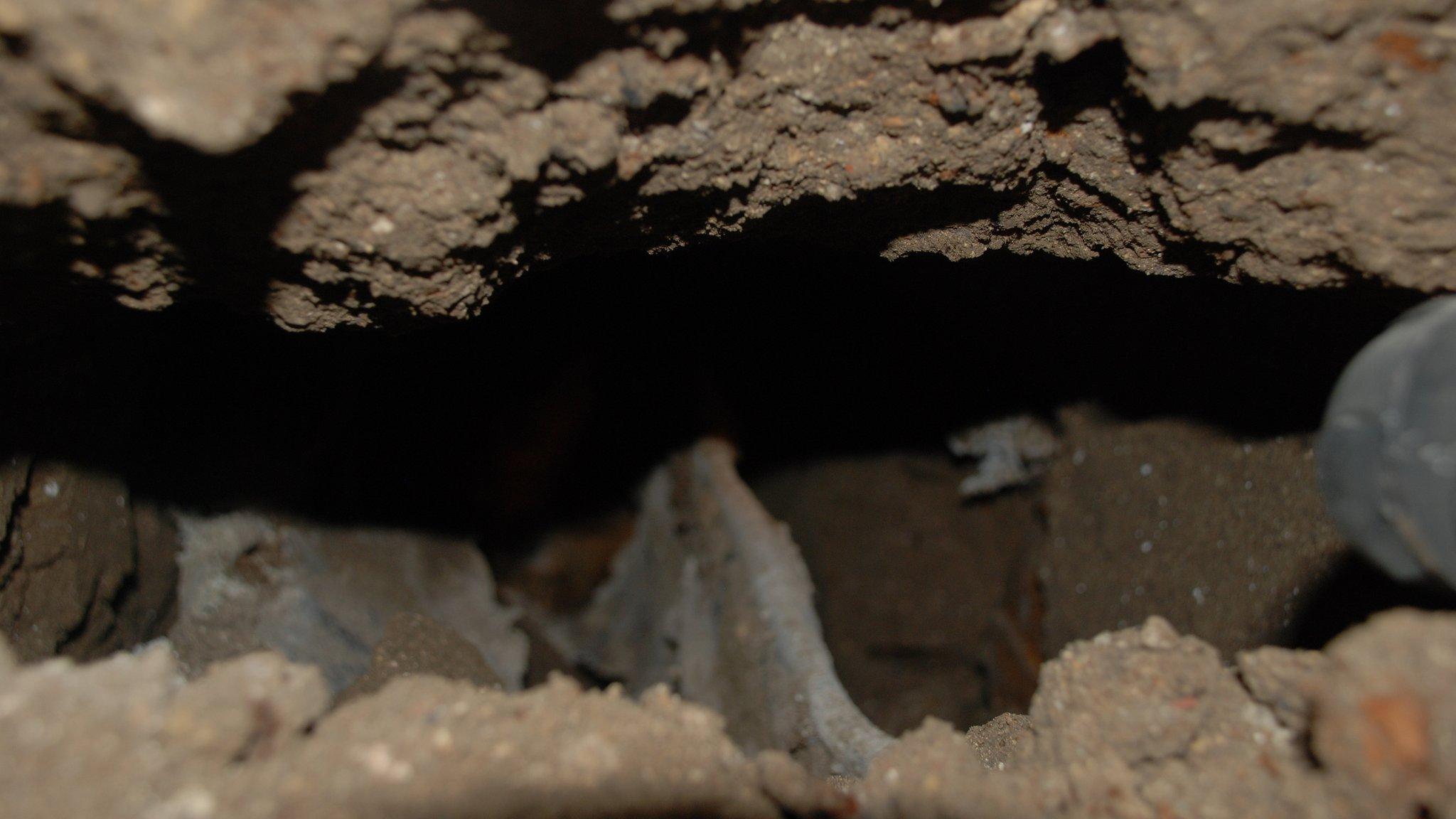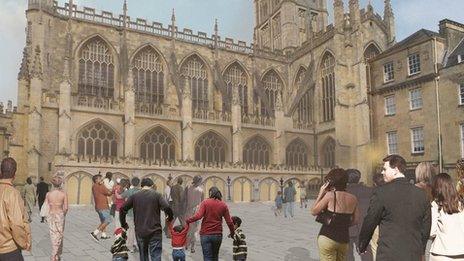Hot springs to heat Bath Abbey and Pump Rooms
- Published

The Roman Baths, Pump Room and Bath Abbey are in close proximity to each other in the Georgian city
Energy from Bath's hot springs is to be used to heat the city's abbey.
Permission has been granted to install heat exchangers in the Roman Baths to convert heat from the underground springs into renewable energy.
Every day 250,000 gallons, external (1.137ML) of water with a temperature of about 45C (113F) flow through the Great Roman Drain.
An abbey spokesman said it would replace an "extremely inefficient and expensive" Victorian system.
The 1.5MW of continuous energy recovered from the water will be used to provide under-floor heating for the abbey and surrounding buildings.
'Never done before'
Permission to extract the energy was granted by Bath and North East Somerset Council.
Charles Curnock, from Bath Abbey, said it would be a "truly exciting and inventive way of tapping into Bath's most famous resource to create sustainable energy".
"As far as we know, it has never been done before on this scale," he added.
Trial digs in 2011 discovered the building's long-term stability was being affected by burials and graves just below its stone flooring.
It is thought some 8,500 people are buried under the abbey's floor.
- Published15 March 2018

- Published9 April 2015

- Published24 March 2015

- Published27 May 2014

- Published15 August 2013

- Published22 March 2012
